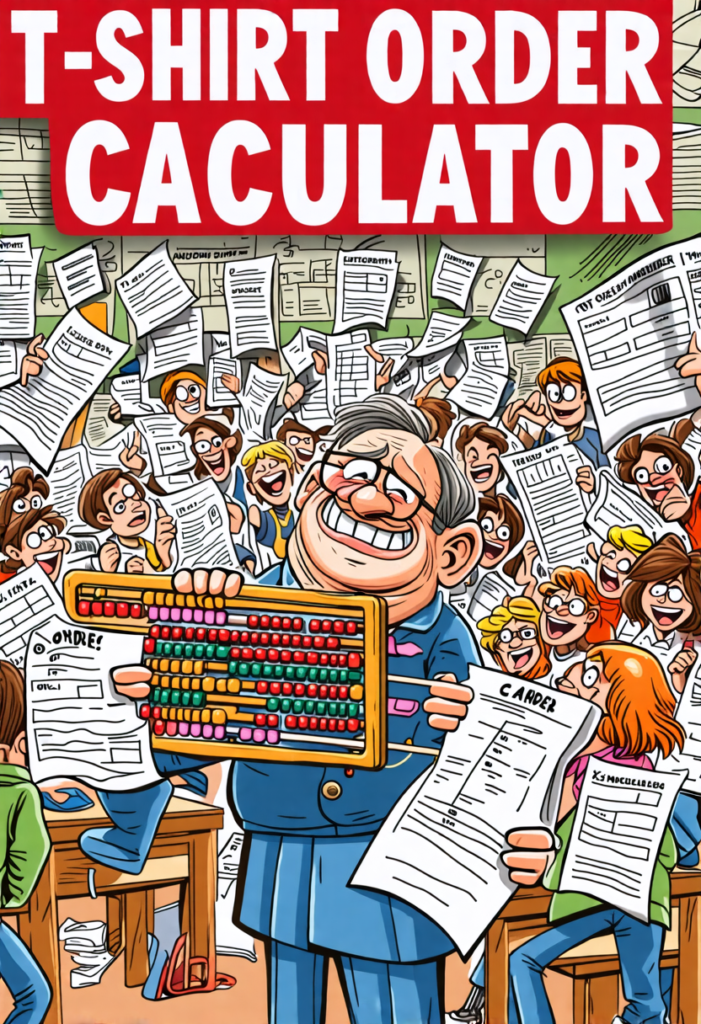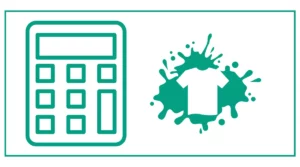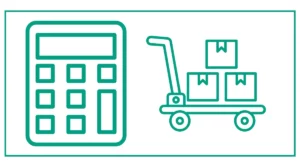T-shirt Order Calculator
The t-shirt order calculator helps you find out how many shirts of each size you need for your business or project.
Enter the number of total t-shirts and hit the calculate button. The calculator automatically calculates the number of small, medium, large, extra large, and 2XL t-shirts for you.
When you order t-shirts, remember that the number of M, L, and XL should be more than S and 2XL, as these shirts will fit most people.
You might also want to figure out how to find the correct shirt price or find out the total capacity and current utilization of your t-shirt factory.

Understanding T-Shirt Size Distribution
Before we dive into how to use the calculator, it’s important to understand the concept of t-shirt size distribution. In most cases, t-shirt orders generally follow a bell curve distribution, with medium and large sizes being the most common. However, this can vary depending on your specific group’s demographics and preferences.
Factors Affecting Size Distribution
Several factors can influence the size distribution of your t-shirt order:
- Demographics: The age, gender, and body types of your group members play a significant role in determining size needs.
- Purpose: The intended use of the shirts (e.g., casual wear, athletic uniforms, or promotional items) can affect size preferences.
- Fit preference: Some people prefer a looser fit, while others like their shirts more fitted.
- Brand and style: Different t-shirt brands and styles may have slight variations in their sizing.
How to Use the T-Shirt Size Calculator
Our T-Shirt Size Calculator is extremely easy to use and can help you get started with your order planning. Here’s a step-by-step guide:
- Enter the total number of t-shirts you need in the “Order size” field.
- Click the “Calculate” button.
- The calculator will display the recommended number of shirts for each size (SM, M, L, XL, and 2XL) based on a standard distribution.
This calculation provides a solid starting point for your order. However, you may want to adjust these numbers based on your specific group’s needs or preferences.
Benefits of Using a T-Shirt Size Calculator
Utilizing a t-shirt size calculator offers several advantages:
- Time-saving: It eliminates the need for manual calculations or guesswork.
- Cost-effective: By ordering the right quantity of each size, you can minimize waste and avoid unnecessary expenses.
- Improved satisfaction: Ensuring you have enough shirts in the most-needed sizes helps keep everyone in your group happy.
- Simplified planning: The calculator provides a clear breakdown, making it easier to plan your order and budget.
T-Shirt Size Breakdown: A Closer Look
Let’s examine a typical t-shirt size breakdown for a bulk order. While individual orders may vary, this distribution can serve as a helpful guide:
- Small (S): 10%
- Medium (M): 24%
- Large (L): 32%
- Extra Large (XL): 24%
- 2X-Large (2XL): 10%
This breakdown assumes a relatively even distribution across different body types and preferences. However, you may need to adjust these percentages based on your specific group’s characteristics.
Example: Ordering 100 T-Shirts
To illustrate how this works, let’s take an example of ordering 100 t-shirts:
- Small: 10 shirts
- Medium: 24 shirts
- Large: 32 shirts
- XL: 24 shirts
- 2XL: 10 shirts
This distribution ensures that you have a good range of sizes to accommodate most people in your group.
Customizing Your T-Shirt Order
While the T-Shirt Size Calculator provides a helpful starting point, you may need to customize your order based on your group’s specific needs. Here are some factors to consider:
Group Demographics
If your group skews younger or older, or has a higher proportion of men or women, you may need to adjust your size distribution accordingly. For example, a group of high school students might require more small and medium sizes, while a group of adult men might need more large and XL sizes.
Activity Type
The purpose of your t-shirts can influence size preferences. For instance, if you’re ordering shirts for a sports team, you might need more fitted sizes for better performance. On the other hand, if the shirts are for a relaxed company picnic, you might opt for a looser fit and size up.
Brand and Style Variations
Different t-shirt brands may have slight variations in their sizing. Some brands run small, while others run large. It’s a good idea to check the size chart provided by your chosen brand and adjust your order accordingly.
Special Sizes
Don’t forget to account for special sizes that might be needed in your group. This could include extra small (XS) or sizes larger than 2XL, such as 3XL or 4XL. While these sizes are less common, ensuring you have options for everyone in your group is important.
Tips for Accurate T-Shirt Sizing
To ensure you get the most accurate size distribution for your group, consider these tips:
- Survey your group: If possible, ask group members for their preferred t-shirt sizes before placing your order.
- Consider past orders: If you’ve ordered shirts for this group before, use that data to inform your current order.
- Allow for some flexibility: Order a few extra shirts in various sizes to accommodate unexpected needs or last-minute additions to your group.
- Think about shrinkage: If you’re ordering 100% cotton t-shirts, keep in mind that they may shrink slightly after washing. You might want to size up in some cases.
Bulk T-Shirt Orders: Getting the Best Deal
When placing a bulk t-shirt order, you may be eligible for discounts. Many suppliers offer better rates for larger quantities. Here are some tips to help you get the best deal:
- Compare prices: Get quotes from multiple suppliers to ensure you’re getting a competitive rate.
- Ask about bulk discounts: Many suppliers offer tiered pricing, with better rates for larger orders.
- Consider the total cost: Don’t just look at the per-shirt price. Factor in additional costs like printing, shipping, and any setup fees.
- Plan ahead: Placing your order well in advance can sometimes result in better pricing and ensure you have your shirts when you need them.
Custom T-Shirts: Beyond Sizing
While getting the right sizes is crucial, there are other factors to consider when ordering custom t-shirts:
T-Shirt Material
The fabric of your t-shirts can affect both comfort and durability. Common options include:
- 100% Cotton: Soft and breathable, but may shrink after washing.
- Cotton Blend: Often a mix of cotton and polyester, offering a balance of comfort and durability.
- Performance Fabrics: Moisture-wicking materials ideal for athletic wear.
Printing Method
The method used to print your design on the t-shirts can impact both the look and feel of the final product. Common printing methods include:
- Screen Printing: Ideal for large orders and vibrant designs.
- Direct-to-Garment (DTG): Great for complex, multi-color designs in smaller quantities.
- Heat Transfer: Suitable for small orders or personalized shirts.
Design Considerations
When creating your t-shirt design, keep these factors in mind:
- Placement: Where on the shirt will your design be printed?
- Size: How large should the design be?
- Colors: How many colors will you use? This can affect printing costs.
- Artwork quality: Ensure your logo or design is high-resolution for the best results.
Group Orders: Coordinating and Collecting Sizes
If you’re coordinating a group order, collecting accurate size information can be challenging. Here are some strategies to make the process smoother:
- Use online forms: Create a simple online form where group members can submit their size preferences.
- Set a deadline: Give people a specific date by which they need to provide their size information.
- Offer size samples: If possible, have sample shirts in different sizes available for people to try on.
- Communicate clearly: Provide clear instructions and any relevant size charts to help people choose the right size.
T-Shirt Fit Guide
Understanding different t-shirt fits can help you choose the right style for your group:
- Standard Fit: A classic, relaxed fit that suits most body types.
- Fitted: A slimmer cut that’s more form-fitting.
- Loose Fit: A roomier style that offers more comfort and movement.
- Athletic Fit: Designed to accommodate broader shoulders and chest with a tapered waist.
Remember that the same numerical size (e.g., Large) may fit differently depending on the cut of the shirt.
Conclusion
Ordering t-shirts for a group doesn’t have to be a daunting task. By using our T-Shirt Size Calculator and considering the factors we’ve discussed, you can streamline your ordering process and ensure you get the right quantity of shirts in the sizes you need. Whether you’re ordering for a small team or planning a large event, this tool can help you get started on the right foot.
Remember, while the calculator provides a helpful starting point, it’s always a good idea to consider your specific group’s needs and preferences. With careful planning and the right tools, you can make your custom t-shirt order a success.
Ready to get started with your t-shirt order? Use our T-Shirt Size Calculator to begin planning your size distribution today. Whether you’re ordering 50 t-shirts or thousands, this tool can help make the process a lot easier and more efficient.

References
- T-Shirt Size Breakdown for Group Orders: How To Order The Right Quantity. (n.d.). T-Shirt Size Breakdown for Group Orders: How to Order the Right Quantity. rushordertees.com/blog/how-to-order-sizes-for-group-t-shirts/
- T-Shirt Size Breakdown: ORDERING THE RIGHT QUANTITY. (2022, February 18). All-County Apparel. allcountyapparel.com/post/t-shirt-size-breakdown
- Get Your Size Breakdown Ready With Our Printing Checklist | Real Thread. (2001, April 1). Get Your Size Breakdown Ready With Our Printing Checklist | Real Thread. realthread.com/blog/getting-your-size-breakdown-ready-use-our-tshirt-printing-checklist





